Frontier Centre for Public Policy
Is the Price of Reconciliation that we Must Pretend to Believe a Lie?
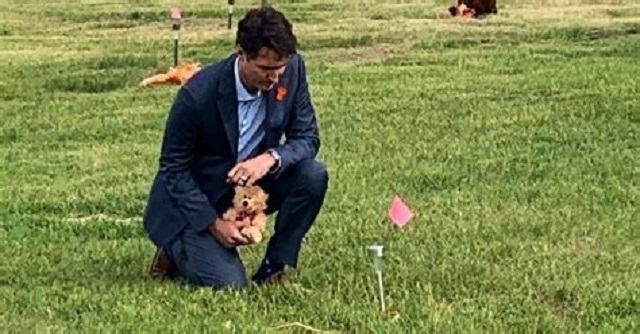
From the Frontier Centre for Public Policy
Even the Kamloops band is backing away from its most extreme claim, that ‘bodies were found’
The price we are being told that we must pay to achieve “reconciliation” is becoming clear. We must pretend to believe a lie.
The lie is that 215, and then thousands, of indigenous students of residential schools were “disappeared” while at the schools — that they died under sinister circumstances while under the care of the priests, nuns and teachers running the schools, and were buried in secrecy.
To top it off, it is claimed that fellow students — “as young as six” — were forced by these evil priests to dig the graves. The fact that there is not one scintilla of good evidence to support this deeply anti-Catholic blood libel is not supposed to deter us from accepting it as fact. We are being told that we must pretend to believe this lie if we want to achieve “reconciliation”.
If there was any doubt that the Assembly of First Nations (AFN) was insisting that Canadians must pretend to believe the false claim, it was dispelled when they angrily rejected the funding cap that the federal government had placed on its ill-considered promise to provide a total of $320 million to indigenous communities that chose to go on their own “missing children/unmarked graves” search.
The chiefs showed who was boss, and the federal government meekly submitted, and cancelled the funding cap.
The government coffers were left wide open, and indigenous communities expanded existing searches for “missing children.” In reality these children were never missing. As Tom Flanagan explains in Grave Error (above), they were “forgotten children” who had been properly buried in marked graves that were subsequently left untended and forgotten by their families.
Be that as it may, as a result of AFN activism, and government and media incompetence, the Kamloops claim morphed into an officially sanctioned lie.
But where is the truth in all of this?
Most of us knew, even when this claim was first made in 2021, that these grisly tales of sinister deaths and secret burials could not possibly be true.
There is simply no historical record of any such thing occurring.
There are no records of parents frantically looking for children who suddenly went missing from residential schools, no police reports of missing children. Nothing.
In fact the extensive records we do have say exactly the opposite — namely that the deaths of children who sadly died of the diseases of the day at residential schools were all properly recorded, and that almost all of the deceased children were buried by their parents on their home reserves.
The small minority who were buried in special school cemeteries, (because the transportation of the bodies back to remote reserves was impractical,) all received Christian burials. Their places of burial were made known to their parents. The fact is that record keeping of indigenous children at residential schools was far superior to record keeping of the children on reserves, where far greater numbers died of exactly the same diseases.
But for reasons best left to future historians to ponder the Trudeau government and its CBC media ally immediately accepted the crackpot Kamloops claim as true. CBC and other gullible media went into overdrive pumping out misinformation in support of the baseless claim, while the Trudeau government ordered all flags on federal buildings across Canada lowered, where they remained for six months!
Trudeau’s indigenous affairs minister, Marc Miller — perhaps the worst Indian Affairs minister in the history of this country — recklessly promised $320 million to indigenous communities that wanted to make similar claims. And, of course, others did almost immediately.
Down the road, Chief Willie Sellars, of the Williams Lake indigenous community, outdid the rhetoric of his colleague, Chief Casimir. According to Sellars, priests had not only killed countless indigenous children, but had thrown their bodies into “rivers, streams and lakes” as well as the usual old standards of throwing bodies into school furnaces and incinerators. Other communities wanting in on the money jumped onto the bandwagon with increasingly fantastical tales.
The result of this Trudeau government recklessness — aided by a gullible media that asked no questions — was predictable. These false stories became etched in stone as the truth within the indigenous community. A victim mentality that was already deeply imbedded became pathological, as indigenous communities became convinced — on evidence that was entirely false — that they were victims of a genocide committed by their neighbours.
The chiefs also silenced the many thoughtful members within their communities who knew that these stories of murderous priests were not true. As investigative reporter, Terry Glavin, explains, even among the Tk’emlups community there were always sensible voices who did not believe those claims:
“From the outset, even among Tk’emlúps people there was a great deal of skepticism and disbelief in stories about nuns waking children in the middle of the night to bury their murdered classmates under the light of the moon”
But instead of heeding those sensible indigenous voices, and even as it became increasingly clear to Canadians that these stories were just tall tales, there was so much money in it that the chiefs doubled down. They insisted that Canadians must pretend to believe that the claims were true.
That would be their price for “reconciliation”.
As noted above, the weak Liberal government gave into this blackmail by removing the funding cap on searches it had tried to impose. But other important institutions cravenly played along with what was now an officially sanctioned lie as well.
Jon Kay explains in his recent Quillette essay how the Law Society of British Columbia is now insisting that anyone who wants to be a lawyer in that province must pretend to believe the “evil priest” line of stories.
Other law schools and law societies across Canada are doing this as well. They are so focused on what they perceive as the holy grail of “reconciliation” that they are prepared to sacrifice a pursuit of truth as their goal, and force their own students — our future lawyers and judges — to do the same.
Our public schools — to bring about “reconciliation — are indoctrinating our children with lessons about the “215 Kamloops graves” and other misinformation, such as the “Charlie Wenjack” story.
Children are taught that Wenjack was abused by Catholic priests and nuns in his residential school, and ran away as a result.
In fact, as author and historian Robert MacBain explains in his important book, “The Lonely Death Of An Ojibway Boy” Charlie Wenjack lived at a Protestant hostel run by a kindly indigenous family, attended school by the day in Kenora, and probably never saw a residential school, or met a priest or nun, in his life.
But, in the interests of “reconciliation” our children are being misinformed by their teachers.
And when a teacher does dare to tell the truth, as when B.C. teacher, Jim McMurtry told his students that the children who died in residential schools died of the diseases of the day — and were not tortured to death, as was being reported — he was frogmarched from his classroom, and summarily fired.
Or Frances Widdowson, who was fired from her tenured university position largely for daring to dispute what was becoming an increasingly extreme residential school narrative.
All of this obvious unfairness, is happening in the name of “reconciliation.” The senior lawyers who oversee the Law Society, and the educators who select our children’s school curricula are doing a great disservice to this country. As are our MPs who foolishly labelled Canada as genocidal, based on the same false Kamloops claim.
As are our senior indigenous leaders, who know by know that the murderous, secret-burying priest story has always been just a silly ghost story that children tell to scare one another. Yet they insist that Canadians must pretend to believe it, or they will withhold the “reconciliation” that they wield like a sledge hammer over our heads.
It should have occurred to everyone by now that if the price of “reconciliation” is pretending to believe a lie, the price is far too high. That kind of “reconciliation” is worth nothing.
In actual fact, what this country and its indigenous population needs is not “reconciliation” at all. Too many indigenous people are stuck at the bottom of the socioeconomic ladder. What they need is not “reconciliation” but integration into the economy, and the opportunity to participate in it. As for the opportunists who exploit a false claim to benefit themselves, they deserve only our contempt.
What nobody needs is a country where citizens must lie to each other in order to stay together.
And now, to add insult to injury, MP Leah Gazan wants to make it a law that we must all lie to each other by criminalizing what she calls “residential school denialism”. She specifically singles out the Kamloops claim as something Canadians must accept as true. As she sees it any Canadian who refuses to do so, or who dares to suggest that the positives, as well as the negatives of residential schooling should be recognized, should be made a criminal. Dostoevsky famously asked if there will come a time “when intelligent people will be banned from thinking, so as not to offend the imbeciles”. Has that time arrived?
Brian Giesbrecht, retired judge, is a Senior Fellow at the Frontier Centre for Public Policy.
Business
It’s Time To End Canada’s Protectionist Supply Management Regime

From the Frontier Centre for Public Policy
Senior Fellow Brian Giesbrecht says it’s time to stop coddling millionaire dairy barons. Supply management drives up grocery bills, blocks trade and makes Canada a global joke. Australia fixed it—we can too.
Canadians are paying the price for political cowardice
Canada’s outdated supply management system forces the average Canadian family to spend $500 a year to protect a small group of wealthy dairy producers, most of them millionaires. This protectionist regime enriches a few at the expense of many, drives up food prices and undermines Canada’s credibility in trade negotiations. It no longer fits the times, and it has to go.
Let’s be clear: this isn’t about attacking dairy farmers. Most are hardworking, conscientious people who’ve built their lives around a system they didn’t create. They rise early, work long hours, rarely take holidays and deserve fair compensation if the system is dismantled. But good intentions don’t justify bad policy.
Under supply management, the government tightly controls how much dairy, poultry and eggs Canadian farmers can produce and imposes steep tariffs—sometimes more than 400 per cent—on imported products to limit competition. The result is artificially high prices, limited consumer choice and retaliatory tariffs from other countries.
This system, once designed to protect small family farms, is now dominated by fewer than 10,000 large operations, many worth millions. It no longer serves its original purpose, yet it remains in place because of political cowardice. Pierre Poilievre and Mark Carney both know the system is flawed but won’t challenge it. Why? Because it’s popular in Quebec, a province with significant electoral influence. No party wants to risk alienating those voters.
Australia and New Zealand once faced similar challenges. They phased out their systems, fairly compensated farmers through levies and built globally competitive dairy sectors. We can too. Trump’s return to power may force our hand, but it also gives us an opportunity to act on what we should have done long ago.
Even without outside pressure, the inefficiency is clear. Every year, billions of litres of milk are dumped when quotas are exceeded. At the same time, Canadian companies like Saputo are forced to relocate abroad to reach global markets. Our artisan cheese producers are trapped in a small domestic economy while foreign markets block our exports in retaliation for our own protectionism.
The hypocrisy is glaring. We call for free trade but defend a system that imposes up to 400 per cent tariffs on imports. Our global partners are right to scoff.
Trump did. In a social media post, he wrote: “Canada is a very difficult country to TRADE with, including the fact that they have charged our Farmers as much as 400 per cent Tariffs, for years, on Dairy Products.” And in his July 10 letter announcing 35 per cent tariffs on Canadian goods, he added: “Canada charges extraordinary Tariffs to our Dairy Farmers—up to 400 per cent—and that is even assuming our Dairy Farmers even have access to sell their products to the people of Canada.”
This isn’t just an American objection. High-quality dairy from France and Germany can’t be sold in Canada because of our import barriers. Their governments respond by blocking our dairy exports. Canada loses jobs, investment and credibility.
Some defenders claim foreign dairy is unsafe. But countries like France and Germany have food safety standards as strict as ours. And Canada already has legal mechanisms to block substandard imports. We don’t need tariffs for that.
Former Liberal MP Martha Hall Findlay said it plainly: supply management is a dead end. So did Maxime Bernier, who made it a central issue during his bid for the Conservative leadership. The dairy lobby made sure he didn’t win. And we’re still stuck.
Now, all parties have voted to exclude supply management from current trade talks. We are entering negotiations that demand fair treatment while protecting one of the most unfair systems in the developed world. It’s a national embarrassment.
But this can change. A phased buyout funded by a modest, temporary levy—not taxpayer dollars—could end supply management and open our dairy sector to global opportunity. Australia and New Zealand proved it works. Their citizens don’t pay $10 for butter or yogurt. Neither should we.
It’s time to stop protecting the past. Dismantle the system. Free our producers. Lower grocery bills. Restore our credibility.
Maxime Bernier saw it in 2017. Trump is saying it again in 2025.
This time, we’d better listen.
Brian Giesbrecht is a retired judge and senior fellow at the Frontier Centre for Public Policy.
Frontier Centre for Public Policy
Canada’s New Border Bill Spies On You, Not The Bad Guys

From the Frontier Centre for Public Policy
By Lee Harding
Lee Harding warns that the federal government’s so-called border bill lets officials snoop on your data, ban big cash payments and even open your mail – all without a warrant
Think Bill C-2 is about stopping fentanyl? Think again. It lets the feds snoop your data, open your mail and ban big cash payments – no warrant needed
The federal government is using the pretext of border security, the fentanyl crisis and transnational crime to push through Bill C-2, legislation that dangerously expands surveillance powers, undermines Canadians’ privacy and restricts financial freedom. This so-called Strong Borders Act is less about protecting borders and more about policing citizens.
Bill C-2, a 130-page omnibus bill introduced on June 3, grants broad new powers to government agencies to spy on Canadians and share personal information with foreign countries. A more honest title might be the Snoop and Gossip Act.
Among its most intrusive provisions, the bill would make it illegal for any business, profession or charity to accept cash payments over $10,000, even if made in smaller, related transactions. Want to pay a contractor $10,001 in five separate payments for home renovations? Too bad.
The Justice Centre for Constitutional Freedoms quickly condemned the move. “Restricting the use of cash is a dangerous step toward tyranny and totalitarianism,” the organization posted to X. “Cash gives citizens privacy, autonomy, and freedom from surveillance by government and by banks.”
Under Bill C-2, internet service providers could be compelled—under threat of fines—to hand over names, locations and “pseudonyms” of users without a warrant. Any peace officer or public officer can demand this data by merely claiming “reasonable grounds to suspect” an offence “has been or will be committed.”
It doesn’t stop there. The bill would also authorize the government to open private mail under the same vague threshold of suspicion.
Experts in law and privacy say the bill is a massive overreach. University of Ottawa internet law scholar Michael Geist and Kate Robertson of the University of Toronto’s Citizen Lab both point out that successive federal governments have sought to expand internet surveillance for years, but Bill C-2 goes further than ever before.
“Bill C-2’s big brother tactics combine expansive warrantless disclosure with unprecedented secrecy,” Geist warns. He adds that the bill “overreaches by including measures on internet subscriber data that have nothing to do with border safety or security but raise privacy and civil liberties concerns.”
If the intent were truly to combat fentanyl trafficking and transnational crime, better tools already exist. Conservative MP Frank Caputo pointed out that the bill has 16 parts but says nothing about increasing penalties or jail time for fentanyl traffickers.
“There is nothing about bail in the bill,” Caputo said during early debate on the bill. “In this omnibus bill, it says that offenders can serve their sentence for trafficking in fentanyl from their couch.”
Bloc Québécois MP Claude DeBellefeuille argued that strengthening border security requires more boots on the ground. Two rural border crossings in her riding recently had their staffed hours cut in half.
“It is estimated that the CBSA (Canada Border Services Agency) already has a shortage of between 2,000 and 3,000 border services officers for current duties. If they are given new responsibilities, however necessary, there will be an even greater shortage,” she said.
Not only does Bill C-2 contradict Supreme Court precedent. It also sets the stage for Canada to share sensitive personal information with foreign governments. In 2014, the court ruled that Canadians have a “reasonable expectation of privacy in the subscriber information” provided to internet service providers and that police requests for such data amount to a “search” requiring a warrant.
Robertson warns that the bill not only defies this precedent but also enables Canada to share this dubiously acquired information with 49 other countries under the Second Additional Protocol to the Cybercrime Convention. Canada signed the agreement in 2023 but hasn’t ratified it. Bill C-2 would make that possible.
She calls the protocol’s weak human rights safeguards “a direct threat to existing protections under international human rights law.” Robertson co-authored a submission urging the Department of Justice to reject the 2AP and instead support data-sharing frameworks that are built on consistent rights protections across all signatories.
Further complicating matters, Canada is in negotiations with the United States over a data-sharing agreement under that country’s CLOUD Act. Canada’s willingness to comply may reflect lingering trade pressures from the Trump administration, pressures that could again push Canada to compromise its legal independence and citizens’ rights.
This bill should be scrapped or thoroughly revised. Canadians should not have to surrender their privacy and human rights to serve a global law enforcement agenda that disregards civil liberties. If the line between national security and authoritarianism is erased, the greatest threat to Canadians may no longer be drug traffickers—it may be their own government.
Lee Harding is a research fellow at the Frontier Centre for Public Policy.
-

 Alberta2 days ago
Alberta2 days agoMedian workers in Alberta could receive 72% more under Alberta Pension Plan compared to Canada Pension Plan
-
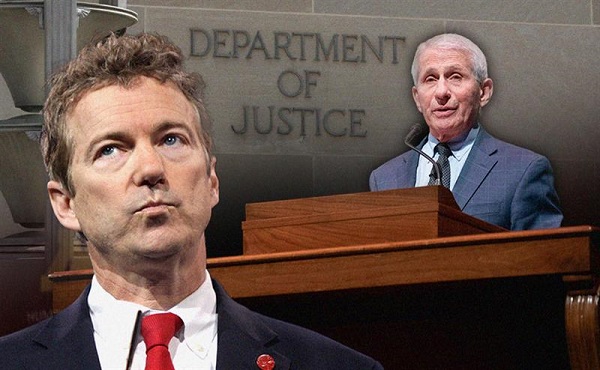
 COVID-192 days ago
COVID-192 days agoSen. Rand Paul: ‘I am officially re-referring Dr. Fauci to the DOJ’
-
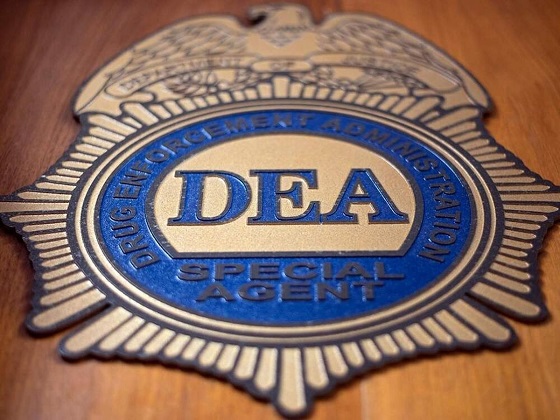
 Crime2 days ago
Crime2 days agoDEA Busts Canadian Narco Whose Chinese Supplier Promised to Ship 100 Kilos of Fentanyl Precursors per Month From Vancouver to Los Angeles
-
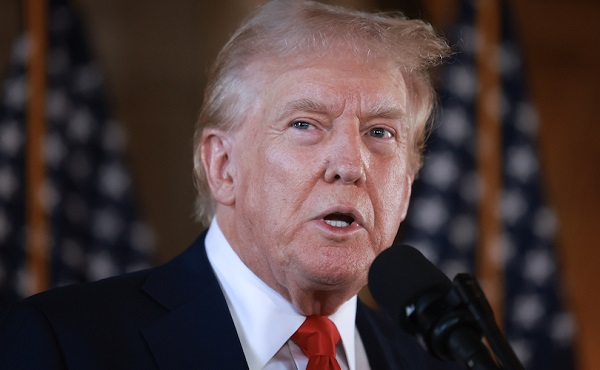
 Education2 days ago
Education2 days agoTrump praises Supreme Court decision to allow dismantling of Department of Education
-

 Business2 days ago
Business2 days agoConservatives demand probe into Liberal vaccine injury program’s $50m mismanagement
-
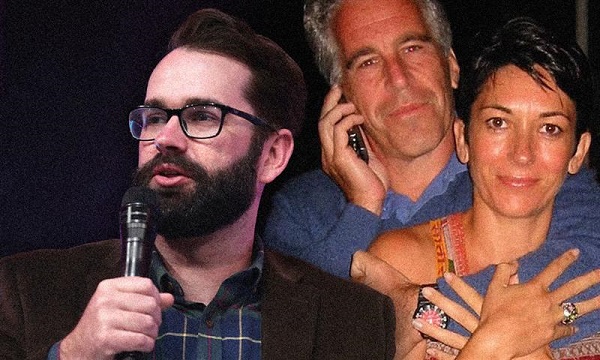
 International1 day ago
International1 day agoMatt Walsh slams Trump administration’s move to bury Epstein sex trafficking scandal
-
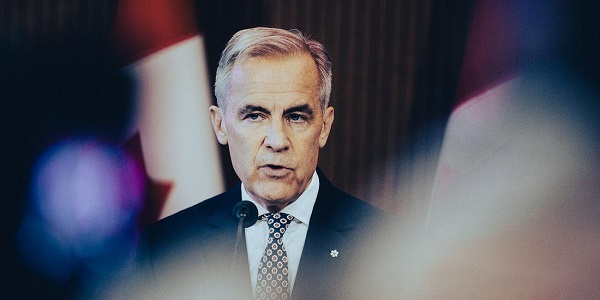
 National1 day ago
National1 day agoDemocracy Watch Blows the Whistle on Carney’s Ethics Sham
-

 Business2 days ago
Business2 days agoCanada must address its birth tourism problem





